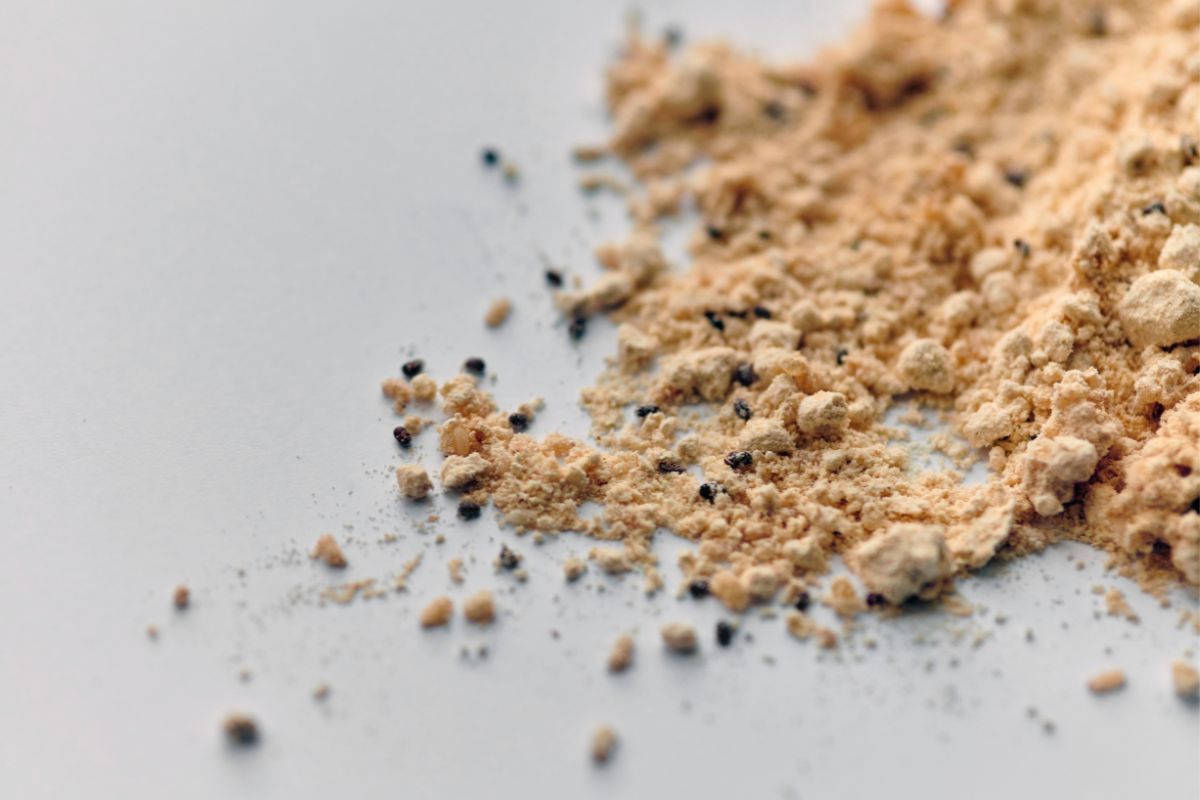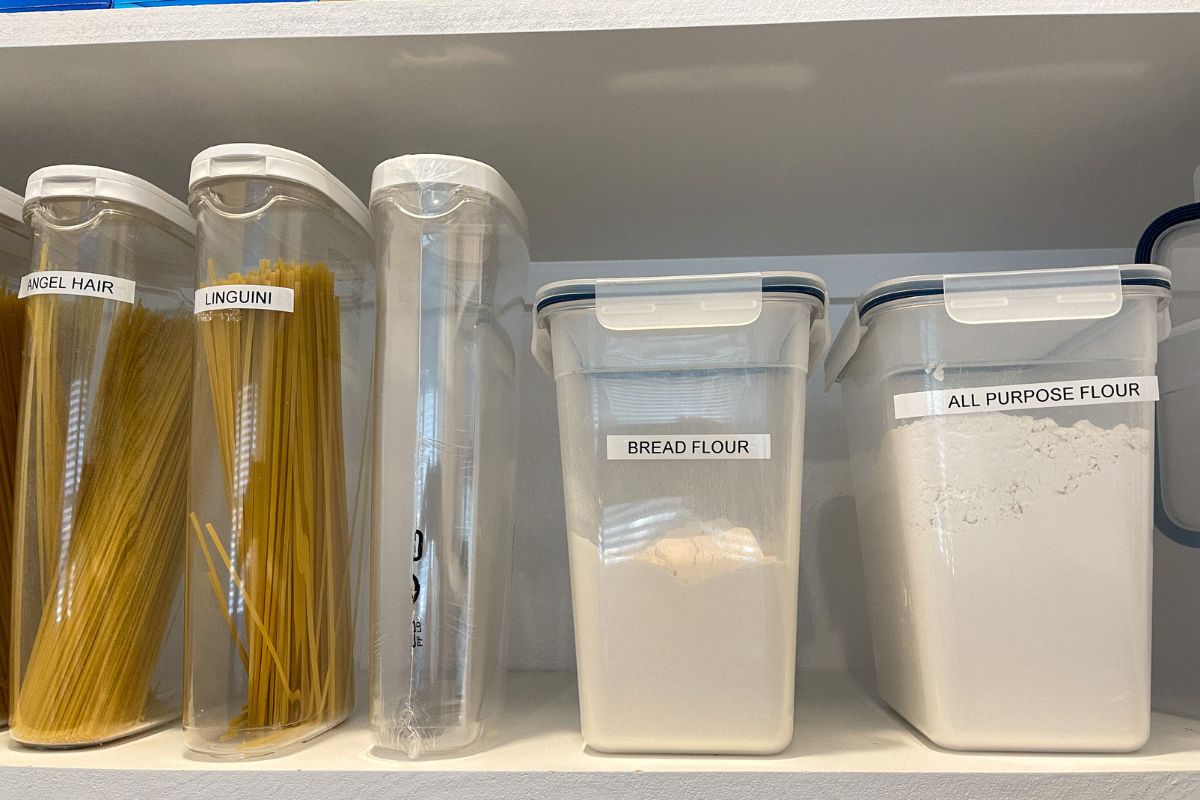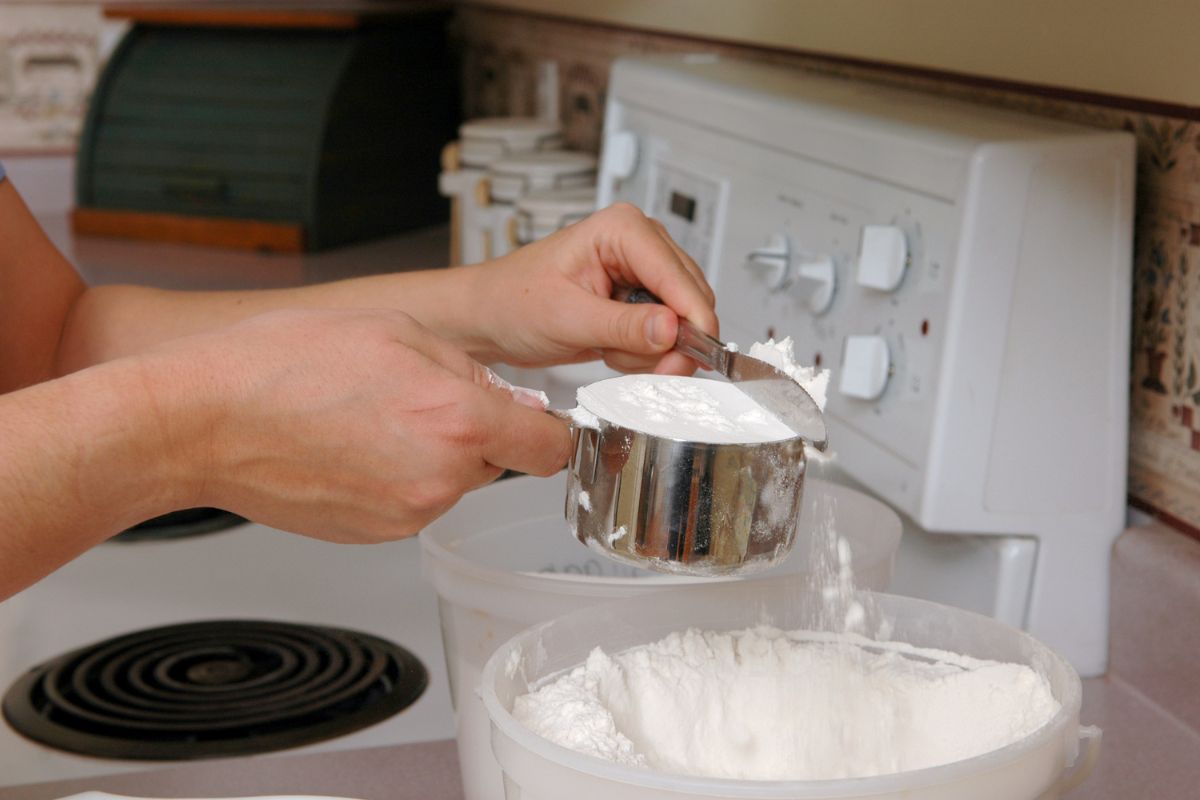About Bugs in Flour
How to store flour to prevent bugs is an essential technique when it comes to maintaining its quality. Regardless of how frequently you use it, following the proper storage methods will preserve its freshness and keep bugs at bay.
Flour can be a magnet for unwanted bugs that pose health risks. This comprehensive guide will walk you through the best practices for storing flour and ensure that it remains fresh and bug-free.
What Do Flour Bugs Look Like?
Flour bugs, also known as pantry pests, can vary in appearance depending on their type. These common bugs often live in flour and other stored food products.
Here are descriptions of some common flour bugs:
Flour Beetle
Flour beetles are small, reddish-brown insects. They have a flattened body shape and are about 1/8 to 1/4 inch (3.18 to 6.35 millimeters) long. Flour beetles often have distinctive ridges on their wings.
Indian Meal Moth
Indian meal moths are small, slender insects with a 3/4 to 1-inch (19.05 to 25.4 millimeters) wingspan. They have a reddish-brown outer half of the wing and a light gray inner half. The larvae of Indian meal moths are tiny, creamy-white caterpillars with brown heads.
Sawtoothed Grain Beetle
Sawtoothed grain beetles are tiny, brownish-black insects about 1/10 inch (2.54 millimeters) long. They have a flattened body with six saw-like projections on each thorax side.
Merchant Grain Beetle
Merchant grain beetles are similar in size to sawtoothed grain beetles, around 1/10 inch (2.54 millimeters) in length. They are reddish-brown and have a distinct three-segmented club at the end of their antennae.
Rice Weevil
Rice weevils are small, reddish-brown beetles measuring about 1/10 inch (2.54 millimeters) in length. They have a distinctive elongated snout and six small bumps on each wing.

The Best Way to Store Flour to Avoid Bugs
Storing flour properly is essential to prevent bugs and keep it fresh for an extended period.
Here’s a comprehensive guide on the best way to store flour to avoid bugs:
Choose the Right Container
Opt for airtight containers made of glass, metal, or heavy-duty plastic. Ensure the container has a tight-fitting lid that creates an airtight seal.
Inspect the Flour
Before storing, carefully inspect the flour for any signs of bugs or foreign matter. Sieve the flour to remove any impurities or bugs.
Clean Storage Containers
Wash and thoroughly dry the storage container before placing the flour inside to remove contaminants.
Use Fresh Flour
Use fresh flour for storage to minimize the risk of pre-existing bug infestations. Additionally, refrain from adding new flour to the old stock, as the old flour might already have bug infestations.
Store in a Cool, Dry Place
Choose a cool, dark, and dry location for storing the flour. Avoid places with high humidity or temperature fluctuations, as bugs thrive in warm and moist environments.
Regularly Check and Rotate
Periodically check the stored flour for any signs of bugs or spoilage. Rotate the flour by using the older stock first to maintain freshness.
Seal Any Open Packages
If using flour from opened paper or plastic bags, fold the bags tightly and seal them in airtight containers. Also, seal any cracks, gaps, or openings in walls to prevent bugs from entering your home.
Educate Yourself
Learn about common flour bugs and how to identify them to take immediate action if an infestation occurs.
Be Cautious With Bulk Purchases
If buying flour in bulk, ensure the storage containers are airtight and bug-proof before transferring the flour.
Clean Storage Area
Regularly clean and sanitize the storage area to prevent attracting bugs and maintain a clean environment.
Dispose of Infested Flour Properly
If you discover bugs in the flour, promptly dispose of the infested flour far from your home to prevent reinfestation.
How to Get Rid of Flour Bugs
Getting rid of tiny bugs in flour is vital to maintain the quality and safety of your stored flour.
Here’s a step-by-step guide on how to effectively eliminate flour bugs:
- Identify the infested items: Check all stored food items, especially flour, for signs of infestation. Look for moving bugs, webs, or larvae.
- Dispose of infested items: Discard any food items, including flour, that have bug infestation to prevent the bugs from spreading. If you repeatedly experience infestations with a particular product, consider not purchasing it or storing it in your pantry.
- Thorough cleaning: Empty and clean all shelves and surrounding areas where infested items were. Use a vacuum cleaner to remove any remaining bugs, eggs, or larvae.
- Wash containers: Wash airtight containers with hot, soapy water and dry them thoroughly before using them again.
- Freeze-infested items: If possible, freeze the infested items for a few days to kill any remaining bugs, eggs, or larvae. Place the items in sealed bags before freezing.
- Use pest control products: To eliminate pantry pests, consider using pest control products like insecticides or hygroscopic substances used to maintain dryness (desiccants). Follow the guide on the product carefully and use it in the affected areas.
- Consult a professional exterminator: If the infestation persists or is severe, consult a professional pest control expert for an extensive treatment plan.
- Maintain cleanliness: Regularly clean and inspect your pantry and storage areas to prevent future infestations. Store new food items in airtight containers to avoid attracting bugs.
- Seal entry points: Identify and seal any cracks or openings in your pantry or kitchen that could serve as entry points for bugs.
- Store smartly: Avoid storing food in cardboard or paper containers as they are more susceptible to bug infestations.
- Maintain vigilance: Stay vigilant and act promptly if you notice any signs of bug infestation to prevent a full-blown problem.

How do Weevils Get in Flour?
Weevils are prevalent pantry pests that can infest flour and other stored food products. Understanding how weevils get into flour can help you prevent infestations and maintain the freshness of your stored ingredients.
Here’s how weevils typically enter flour:
Contaminated Packaging
Weevils can already be present in the packaging or container of the flour when you purchase it. They may have laid eggs or brought larvae, which can hatch later, infesting the flour.
Storage Conditions
If the storage area where you keep your flour is not adequately sealed or protected, weevils can easily find their way into the packaging. They are tiny and can squeeze through small openings.
Infested Storage Area
Weevils can already exist in the storage area before you introduce the flour. If the site has weevils or other pantry pests, they can easily contaminate the flour.
Incoming Infested Food Items
Weevils can infest your pantry through other infested food items you bring into your home. When you store these items alongside flour, the weevils can migrate and infest the flour.
Unsealed or Damaged Packaging
If the flour packaging has no proper seal, weevils can access the flour directly. Similarly, if the packaging is damaged, weevils can easily penetrate it.
Is it Safe to Use Flour With Weevils?
Consuming flour with weevils is generally considered safe but not recommended. They are not known to transmit diseases harmful to humans; therefore, accidentally ingesting weevils in flour is unlikely to cause any health issues.
However, it’s essential to consider a few factors before deciding whether to use flour with weevils:
Personal Preference
Many people find the presence of weevils or their larvae in food unappealing and choose not to consume the infested flour for aesthetic reasons.
Quality and Freshness
Weevils can affect the taste and quality of the flour by imparting a slightly off flavor and altering the texture of the flour.
Hygiene and Sanitation
Consuming flour with weevils may not align with personal hygiene and sanitation standards, especially if the infestation is significant.
Risk of Allergic Reactions
Some individuals may be allergic to weevil proteins, and consuming weevils or their larvae could trigger allergic reactions in susceptible individuals.
Our Other Tips for Preventing Flour Bugs
Here are additional tips to help you keep your pantry bug-free:
Store Pet Food Securely
If you have pets such as cats or dogs, storing pet food in airtight containers is vital. This helps prevent bugs from contaminating it and spreading to other human food items such as flour.
Maintain a Clean Kitchen
Clean up spills, crumbs, and food debris immediately, especially in and around food storage and preparation areas.

Avoid Overstocking
Only store the amount of flour you will use within a reasonable time to minimize the risk of breeding worms in flour.
Be Cautious With Secondhand Items
Be careful when bringing secondhand items like storage containers into your home, as they may harbor hidden infestations.
Educate Family Members
Educate everyone in your household about proper food storage and hygiene to prevent bug infestations.
Does Flour Expire?
Yes, flour does have a shelf life, and it can expire. Flour is a perishable food item; its freshness and quality can deteriorate over time. The shelf life of flour depends on various factors, including the type of flour and how it’s stored. It’s essential to check the packaging for any expiration date or “best by” date provided by the manufacturer.
Parting Thoughts
Properly storing your flour is about maintaining its quality and ensuring it’s safe for consumption. Therefore, it’s crucial to store flour properly to prevent bug infestations. By following the storage guidelines discussed above, you can effectively keep bugs at bay and ensure your flour remains fresh and safe.

Community of passionate writers and content creators who share a love for Italian heritage, culture, travel, food, and the Italian-American community. Our mission is to celebrate Italy’s rich history and traditions and connect with others who share the same passion.

